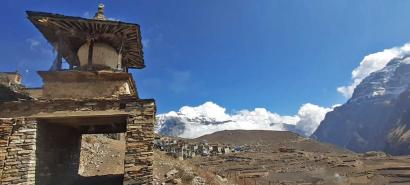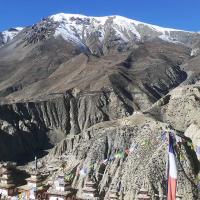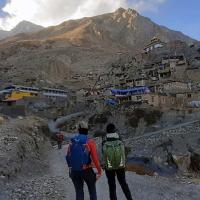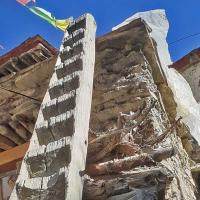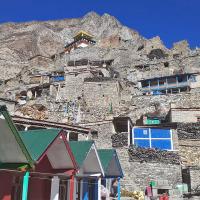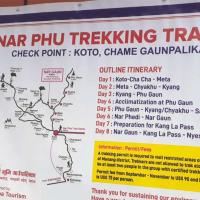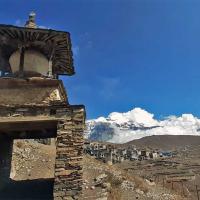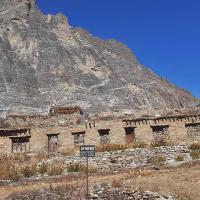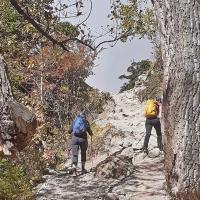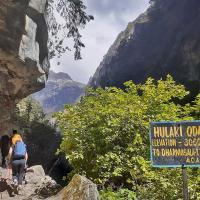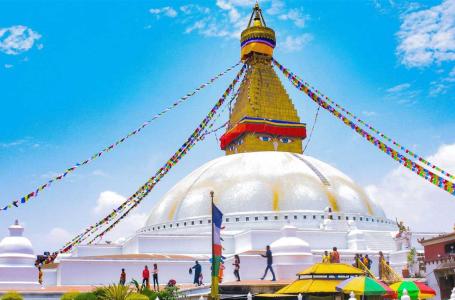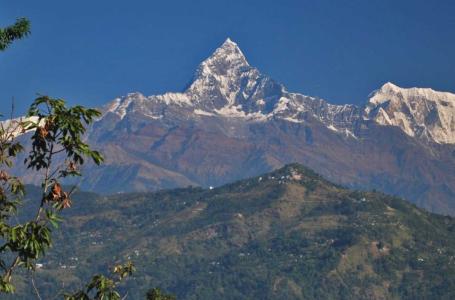- 01Pax USD 1250 pp
- 02 to 05Pax USD 1145 pp
- 06 to 10Pax USD 1145 pp
- 11 to 15Pax USD 1025 pp
Itinerary
Our staff will meet you at the exit gate with flowers and a scarf. He will then drive you to your hotel, where you will spend the day resting.
This day is about preparing for our hiking expedition and sightseeing in Kathmandu. Our guide will pick you up from your hotel and take you to our first destination, Thamel. Thamel is a well-known tourist site. This location also allows us to purchase any required equipment for our adventure. There are also several second-hand and rental businesses for equipment. After shopping, we will proceed to our next stop, the Pashupatinath Temple. This temple is well known in the Hindu religion. More than 500 temples may be found here, with the primary attraction being the Shiva temple. (Only Hindus are permitted to enter this shrine). We will next proceed to the Bouddhanath stupa. This stupa is one of Nepal's oldest and biggest. We will next proceed to Swyambhu Stupa (commonly known as the Monkey Temple). This location is also ideal for those seeking peace and quiet away from Kathmandu's crowded streets. Finally, we will go to Kathmandu Durbar Square. Various old constructions created during the Malla era may be found here. This location is also home to Kumari, Nepal's living goddess. We will then drop you off at your respective lodgings.
We will embark on the journey from Kathmandu to Besishahar in a bus and from there we will make our way to Dharapani in a Jeep.
After breakfast, we set off on foot for Bagarchhap, spending about an hour walking through pine and fir forests. We continue our journey towards Danaque. Now we begin our ascent to Timang. Following that, we go through pine trees till we arrive in Latamarang, our lunch destination. We will continue our trip into the jungle after lunch, with a brief sight of Annapurna II. Finally, we arrived in Koto village. Koto is where you'll spend the night. Breakfast, lunch, and dinner are all included.
After registering our restricted area permit at the Police Check Post, we will walk along the bank of Soti Khola. This walk leads us through beautiful pine trees, suspension bridges, and becks before arriving in Dharmasala. It is vital to have a packed lunch on this tour because there will be no lodges or teahouses along the way. We will continue our trek through woods and rise steeply to Meta village, from which we will get fantastic views of Annapurna II and Lamjung Himal. In Meta, I spent the night. Meals included: Breakfast Lunch and dinner
Today we begin our trek, which will include a few elevation changes as well as several suspension bridges. We will arrive at Kyang after around 4 hours of trekking. From there, we will continue climbing via Phu Khola, admiring the magnificent views of Amotsang Himal, Kangaroo Mountain, and Pokharkan. We finally arrive at Phu Gaon and Stay there for the night. Meals included: Breakfast, Lunch, and Dinner.
Today we begin our trek, which will include a few elevation changes as well as several suspension bridges. We will arrive at Kyang after around 4 hours of trekking. From there, we will continue climbing via Phu Khola, admiring the magnificent views of Amotsang Himal, Kangaroo Mountain, and Pokharkan. We finally arrive at Phu Gaon and Stay there for the night. Meals included: Breakfast, Lunch, and Dinner.
After waking up early in the morning, we will eat breakfast and begin our adventure down the route, which includes several suspension bridges and streams. It takes over 4 hours to go to Mahendra Pul, a bridge visited and funded by the then-King Mahendra. We will eat our lunch here. After lunch, we continue straight uphill, passing several Buddhist stupas until we reach Nar Village. It takes around 2 hours to go to Nar village. Overnight stay in Nar. Meals included: Breakfast Lunch and dinner.
Today will be a long and difficult day. As a result, we'll have to wake up early and travel to Kangla Pass. This path is a bit challenging due to the rough terrain, but it is well worth it when we reach the pass and witness the Annapurna cordillera. It provides us with a panoramic vista of snow-covered mountains. We'll next make our way down a very steep route to Ngwal, where we'll spend the night. Meals include: Breakfast, lunch, and Dinner
After breakfast, we will depart for Manang Valley, where we will have an easy day with spectacular views of Annapurna II, Annapurna III, Pisang Peak, Gangapurna, and Gandharva chuli. We continued our trek across a calm valley, going through a pine forest and avoiding the Marsyangdi River. We will also stop at the monasteries of Braga on the route. We gradually make our way uphill to Mungli. Following the major trial of the Annapurna Circuit, we arrive in Manang, one of Manang District's principal settlements with several teahouses and a stunning monastery. It is from here that we can get a good look at the Annapurna Range. We will spend the night in Manang. Meals included: Breakfast Lunch and dinner.
Finally, our trip has come to an end. So for this day, we will travel back to Kathmandu to Manang, by jeep or bus.
Overview
Nar Phu Valley Trek is one of the isolated trekking routes in Annapurna Conservation Areas, located in the restricted zone of rain shadow trans- -Himalayas of Annapurna Massif that cose to ancient Tibetian culture.
Planning the trek to Nar Phu Valley:
The Nar Phu Valley Trek trek involves challenging terrain with steep ascents and descents. To enjoy a smoother experience, invest time in physical preparation. Start a fitness routine several weeks before your trip, incorporating cardio workouts, strength training, and practice hikes to build endurance. This also helps in acclimatization which is a vital aspect of your trek, helping you avoid altitude sickness. Plan rest days in your itinerary, allowing your body to adapt to higher altitudes gradually. Familiarize yourself with the symptoms of altitude sickness, and be prepared to descend if necessary.
Similarly, proper packing is crucial for a comfortable Nar Phu Valley trek. Pack suitable clothing for various weather conditions, including warm layers and rain gear. Ensure you have sturdy, comfortable hiking boots and essential gear like a sleeping bag, trekking poles, and a well-organized backpack. Keep your pack lightweight but well-equipped.
Best time to do Nar Phu Trek:
The spring season (March to May) is often considered the finest time to hike to Nar Phu Valley Trek. Spring provides exceptional visibility, allowing you to take in panoramic vistas of the Annapurna mountain range and nearby peaks. At lower elevations, the weather is often temperate and pleasant, with daily temperatures ranging from 15°C to 20°C (59°F to 68°F).
Autumn (September to November) is a wonderful season for the Khopra Ridge hike and is quite popular with trekkers. Autumn, like spring, has a bright sky, making it great for soaking in stunning mountain vistas. At lower altitudes, daytime temperatures vary from 15°C to 20°C (59°F to 68°F), making for pleasant hiking conditions.
The Nar Phu Valley Trek is not suggested during the monsoon season or the summer season (June, July, and August). Furthermore, the cold of winter (December, January, and February) is intolerable for the average trekker.
Food and Accommodations:
Along the Nar Phu Valley trekking route, you'll find tea houses that offer basic accommodation and meals. While you should carry some snacks and a water purification method for convenience, rest assured that you can purchase food and water at these tea houses. Be open to trying local dishes and engaging in conversations with fellow trekkers.
It is always advisable to consult your guide for food recommendations for a more healthy and hygienic option.
Transportation:
Our journey to Nar Phu Valley usually begins in Kathmandu, the capital of Nepal. We will take a bus or a private vehicle to Besisahar, which is the district headquarters of the Lamjung District and the starting point for treks in the Annapurna region. The drive from Kathmandu to Besisahar takes approximately 6-8 hours.
After reaching Besisahar, we will continue our journey by taking a local jeep or another form of transportation to reach the village of Dharapani. Dharapani is the last village accessible by road in this region. Afterward, you'll begin trekking on foot from Dharapani to Koto.
The trekking trail from Dharapani to Koto is part of the Annapurna Circuit, which eventually splits off to the Nar Phu Valley Trek. This section of the trek offers beautiful landscapes, including lush forests, rivers, and picturesque villages. Koto is the last settlement before entering the restricted Nar Phu region.
The Nar Phu Valley Trek concludes at Manang, from where you will travel to Kathmandu either shared Jeep or a private vehicle.
(An additional extra fee is charged for private vehicles since it is not included in this package)
Necessary Permits & TIMS:
Nar Phu Valley Trek requires obtaining specific permits, including the Annapurna Conservation Area Permit (ACAP) and the Trekkers' Information Management System (TIMS) card. These permits are essential for regulating trekking activities and supporting conservation efforts in the region.
1. Nar Phu Valley Restricted Area Permit(RAP):
Nepal's government designated Nar Phu Valley a restricted area because it is close to the Tibetan border. Its restricted status helps with border security, tourism control, and ancient culture and heritage protection. Due to this reason, RAP is required for all trekkers to enter this region.
Cost: USD 100 per person for the first 7 days(Sep-Nov) and an additional USD 15 per person per day after 7 days mark. And USD 75 per person for the first 7 days(Dec-Aug) plus USD 15 per person per day additional charge after 7 days mark.
2. Annapurna Conservation Area Project(ACAP):
Because the Nar Phu Valley Walk crosses within the Annapurna Conservation Area Project (ACAP), an Annapurna Conservation Area Project (ACAP) permit is required. This permission is provided to aid in the conservation of the Annapurna Conservation Area's natural and cultural resources.
Cost: Nrs 3000 per person and no additional charges are added for extra days.

3. Trekkers' Information Management System (TIMS):
Trekker's Information Management System (TIMS) is a registration and monitoring system for hikers in Nepal. The fundamental goal of the TIMS system is to assist trekkers in staying safe by giving vital information about their hiking routes and lengths.
Cost: Nrs 3000 per person for non-Nepali tourists and Nrs 1000 for SAARC tourists.
(All the Permit and TIMS cards are included in this package)
Necessary documents for Permits:
- An original passport and current visa(valid for at least six months)
- A scanned copy of the passport-sized photograph(to be uploaded for Nar Phu Valley RAP's online form)
- One printed passport-sized photograph (required for an ACAP permit)
- Travel insurance papers (includes helicopter evacuation of up to 6000m)
Highlights
- Discover the Tibetan-influenced lifestyles and daily activities of ordinary residents.
- Breathtaking walk through the unique rock structures and terrain forms.
- Be in the center of the Annapurna range, with views of Annapurna, Manaslu, and Dhaulagiri, among many other high mountains.
- The region's varied topography
- Accompanied by the Himalayan chain, which includes Manaslu, Dhaulagiri, and Annapurna.
- Thorong La climb (5,416 meters) is a popular hard climb in the area.
- Spiritual fulfillment from traveling through various chortens, gompas, monasteries, and flags
Cost Details
- Airport pick-up and drop transport.
- Hotel in Kathmandu (Hotel Chhimeki, 3 nights)
- Meals as mentioned above in the itinerary.
- Transport Kathmandu to Dharapani by local bus and local jeep.
- All accommodation during the trek
- Experienced English-speaking guide.
- Nar Phu special Trekking permits & TIMS cards.
- National Park entry Permits.
- First aid box during the trip.
- Insurance of Trekking Staff
- All Tax 13% VAT+10% Service charge).
- Farewell Dinner
- All kinds of Drinks
- Visa fee to enter Nepal
- International flight tickets
- Extra night accommodation and meal costs in Kathmandu due to any change in the scheduled itinerary.
- Porter (1 porter for 2 trekkers with a max load of 17 to 20kg).
- All required trekking gears like sleeping bags and down jacket made available for rent.
- Travel insurance/ Rescue operation costs
- All personal expenses
- Tip for the guide and porter
Equipment List
- Woolen shirts and thick sweaters.
- Jackets (Fiber or down).
- Waterproof jacket with hood or poncho.
- Tracksuit, Track shoes, and Trousers.
- Thermal Underwear and Thermal Coat.
- 2 pairs of loose-fitting long shorts/ skirts.
- Pair of Gloves and sandals.
- Woolen hat and long-sleeved shirt.
- Lightweight walking boots.
- 2 pairs of thin socks and 2 pair of woolen socks.
- Snow glasses and sunglasses.
- Trekking Sticks and Duffle bag or kit bag to carry to gear while trekking.
- Some (small/large) plastic bags to separate clean clothes from dirty ones and some smaller plastic bags to dispose of garbage.
- Daypack bag to carry your personal requirements.
- Water Bottle, water purifying tablets.
- Towels, Umbrella (optional).
- Headlamp, Binocular, Camera, trekking map and compass, reading materials, pencil, rubber, pen, notebook, and moisturizer for lip, face body.
Travellers Review
Naar Phu Valley
Went on a 10 day trip to the Naar Phu Valley and it was amazing! Everything was really well organized, including the bus and jeep ride, food, accommodation and selection of the route. The owner is super helpful and answered all the questions we had before. Our guide and porter were very professional and made us feel always safe. They also were really nice company in general and sometimes played card games in the evening. I even had some problems with the high altitude and everything was handeld very well! All in all super nice experience!!




